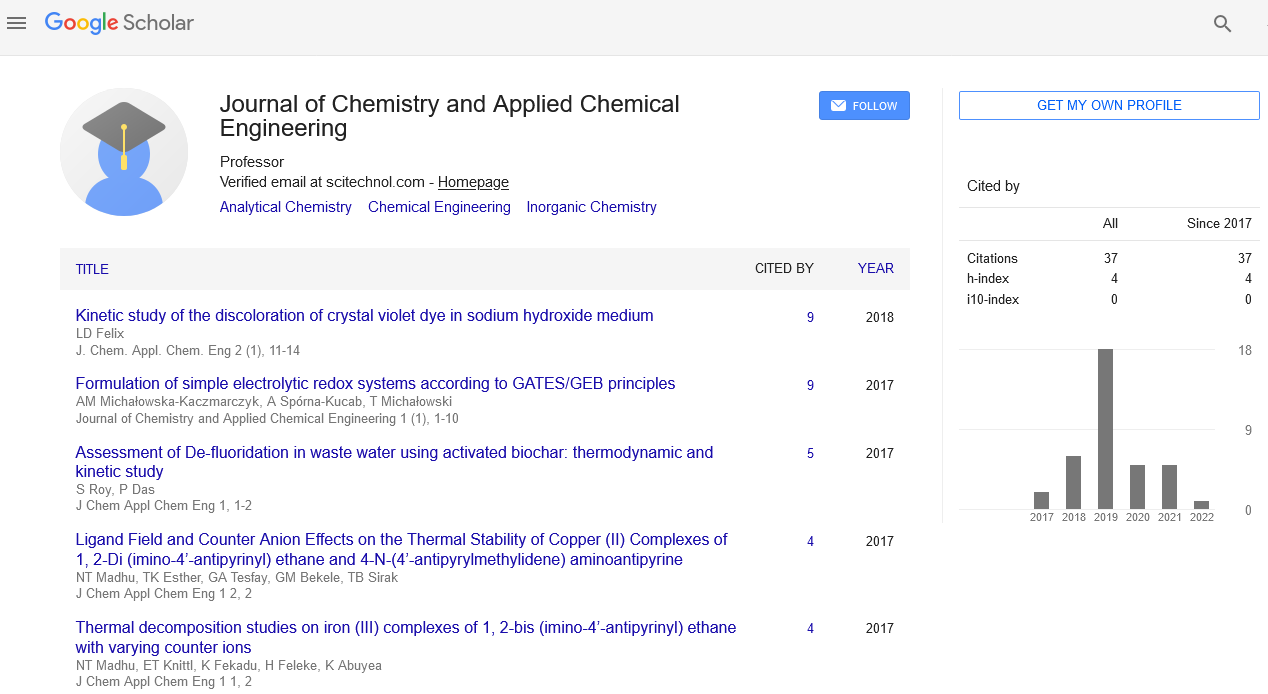Problems of deposits in the field of HMD, Algeria
Arbaoui Mohamed Ali and Hacini Messaoud
Kasdi Merbah University, Algeria
: J Chem Appl Chem Eng
Abstract
The exploitation of field naturally, leads to decrease the productivity of wells, to continue this exploitation with the best conditions, it is essential to pass to the stage of secondary recovery. The injection of water in reservoir is the most used method in the recovery of oil; unfortunately, there is an incompatibility between the injection water and the reservoir water, which poses many problems such as training mineral deposits. The reservoir waters may contain alkaline ions and be brought into contact with the wash water which contains sulfate ions. The injected water eventually reaches the producing wells, in these wells the mixture is made, and the precipitation of barium sulfate (BaSO4) takes place. The crystals then stick in the walls of the tubings, in a process that may be similar to that of sodium chloride, but this time the problem is more serious because it is a very compact deposit insoluble in the water also in acids. Deposits which formed during production and shipping represent a real calamity against which oil producers have been fighting for several decades, deposits causing irreversible damage particularly dangerous for bottom production facilities such as surface and sometimes for the rock itself.
Biography
E-mail: alilobady@gmail.com
 Spanish
Spanish  Chinese
Chinese  Russian
Russian  German
German  French
French  Japanese
Japanese  Portuguese
Portuguese  Hindi
Hindi 